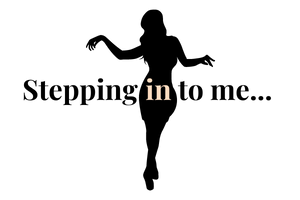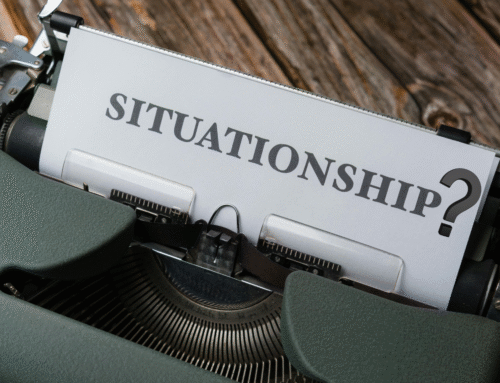The Truth About “The Truth” – Why We Lie and How to Create a Safe Space for Honesty
Have you ever considered lying a dealbreaker in your relationships… but also admitted to lying yourself?
You’re not alone.
In one of my recent group sessions, I asked a room full of people to raise their hands in response to a few simple questions:
- Do you lie?
- Do you know why you lie?
- Are you triggered when others lie to you?
- Do you believe lying is a choice?
These questions sparked a powerful conversation, one that challenged many assumptions about truth, lies, and how fear and pressure shape our honesty.
So let’s unpack the topic that we all think we understand – Just what is “The Truth”.
What Is Truth, Really?
The Latin word Verum means truth, but truth isn’t always black and white.
According to the Oxford Dictionary, truth is defined as –
- “That which is true in accordance with fact or reality”
- “A belief that is accepted as true”
- “The quality or state of being true”
But here’s the thing, one person’s truth can be another person’s lie.
Research in psychology supports this idea. Our “truth” is shaped by our personal lens—our culture, our upbringing, and the experiences that shaped us. This is reflected in constructivist theories of perception (Kelly, 1955) and reinforced by how our brains use cognitive schemas and confirmation bias to interpret reality in ways that feel familiar or safe (Kunda, 1990).
To explore this idea, I led a short visualisation in the session that went like this….
Imagine that you’re holding hands in a circle with every single person who is alive right now on the earth. Some of the people will share parts of your culture, background, environment, and beliefs, and some will not. You all face outward from the circle and are asked, “What do you see?”
You respond: A winding stream, a large tree, tiny yellow flowers in the grass.
Someone further down the line says they see a skyscraper. Another sees a desert.Who is telling the truth?
The answer is simply, all of them.
Truth is shaped by perception, and perception is shaped by many factors but in particular, our cultural conditioning, family patterning, and personal experiences, which I often refer to as C, P & E.
There’s no such thing as “The Truth”
Can we really say there’s such a thing as “the truth”?
In most cases, the only truth that exists is your truth, in that moment in time.
Think about how you once deeply loved someone, and how that same love may no longer exist. That love was once your truth.
And now, it’s not.
Why?
Truth is fluid because we are fluid.
What determines your version of truth?
Your life experiences. Your cultural conditioning. Your family patterning. The stories you’ve absorbed and the ones you’ve survived.
This is backed by social learning theory (Bandura, 1977), which shows how beliefs and behaviours are modelled and learned through those we grow up around. Two people can witness the same event and come away with completely different truths, based on their internal programming.
Let’s Talk About Lying
According to the dictionary, a lie is “an intentionally false statement.”
But here’s the twist, research shows that lying is one of the most natural human responses under pressure.
Studies by DePaulo et al. (1996) reveal that people lie in roughly 20% of their daily interactions—and most of those lies aren’t malicious. They’re self-protective. They arise from fear, pressure, or an instinct to preserve connection.
This mirrors what we see in Polyvagal Theory (Porges, 2011), where our nervous system reacts to threats or emotional discomfort through strategies like avoidance, shutdown, or pleasing. Sometimes, the “lie” is simply a survival response.
Let’s look at some everyday lies-
- False advertising: dating profiles, shapewear, filters, wrinkle creams, viagra.
- People-pleasing: saying “I’m fine” when you’re not.
- Avoidance: ghosting or blocking someone to avoid confrontation.
- Exaggeration: making a story sound more exciting.
- Lying by omission: leaving out details to avoid difficult conversations.
Are these always conscious choices? Not necessarily. Often, we’re not lying to deceive, we’re lying to survive.
What’s behind the Instinct to Lie
Most lies stem from two core triggers:
- Fear
- Pressure
And how we lie often depends on our fight, flight, or freeze response (Cannon, 1932; later expanded by Porges, 2011):
- Fight mode: exaggerating, arguing, twisting facts.
- Flight: avoiding questions, and making excuses.
- Freeze: ghosting, silence, vague responses.
When we’re fearful of rejection, punishment, conflict, or loss, our nervous system kicks in. Lying becomes a protective reflex.
This shows up differently depending on whether we are feminine or masculine. While this isn’t about sexual preference, more to do with the species we were born as, and how we instinctually relate to different fears and motivators.
Feminine energy may lie to –
- Feel safe (e.g., lying to avoid rejection or conflict)
- Maintain connection
- Please others
- Avoid or manage emotional discomfort
Research on gendered communication patterns (Vrij, 2008) aligns with this—showing women are more likely to lie to protect feelings or preserve harmony.
Masculine energy may lie to –
- Create or build opportunities
- Protect privacy or loved ones
- Provide or maintain status
- Shape facts to serve logic or success
Men are more likely to lie to self-enhance or gain advantage (DePaulo & Bell, 1996), often driven by different social conditioning and reward systems.
Creating a Safe Space for Truth
So if we all lie at times, the question isn’t “How do I stop people from lying?”
It’s “How can I create the kind of environment where truth feels safe?”
Studies on psychological safety (Edmondson, 1999) show that people are far more honest and open when they believe they won’t be punished for their vulnerability.
This aligns beautifully with Brené Brown’s research on shame and honesty (Brown, 2012) “we only tell the truth when we feel safe enough to be seen”.
So how do we build that kind of space?
- Avoid punishing honesty. Don’t punish your partner for being honest about that dress, or your teen for confessing what really happened Saturday night.
- Release the pressure. Constant questioning and ultimatums often create more dishonesty.
- Honour courage. If someone owns up to lying, reward their honesty, not your expectations of perfection.
- Appreciate the ability to say no. If someone says “no” to you, thank them for being honest rather than resenting the response.
We can’t control if others lie, but we can give them every opportunity to stand in their truth.
Final Thoughts
We all lie. We all have our own version of truth based on who we are what we believe and what we have experienced, our C, P & E.
But when we begin to understand the why, the fear, the pressure, the cultural conditioning and the family patterning, we stop seeing lying as simply bad behaviour.
We begin to see it as a signal. A clue to what someone’s protecting, fearing, or lacking safety to express.
Let’s commit to doing the brave thing, telling the truth when we can, being honest about when we can’t, and holding space for others to do the same.
Because real honesty doesn’t come from being perfect.
It comes from being safe, being human, and being brave to speak our truth even after the lie.
Want a safe space to explore your own truth?
Book a 1:1 counselling session where we can explore your unique story, patterns, and the fears that might be shaping your communication.
Whether you’re curious about counselling, self-discovery coaching, or simply want a safe space to reconnect with you, let’s have a conversation.
📍 Based in the Hills District of Sydney, offering both in-person (by request) and online sessions.
💌 Book a free 15-minute clarity call.
You don’t have to do it alone. The journey to discovering your own truth starts with one conscious step.
Much love
Lyndal…
xx



